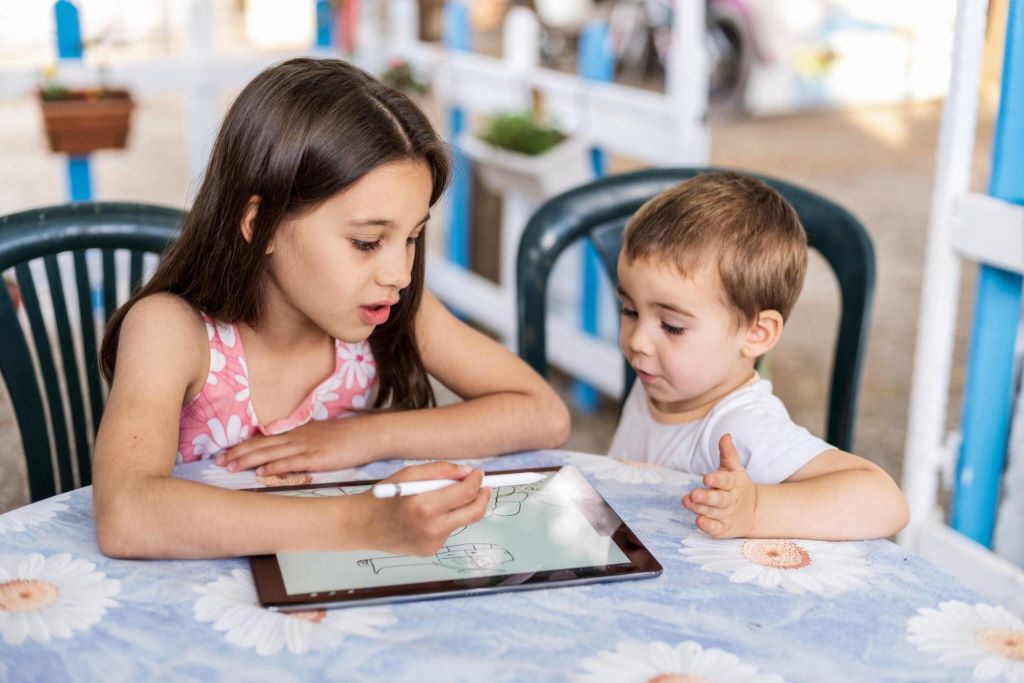
Innovative Approaches: Explore Technology’s Role in Preschool Spanish Immersion Programs
Preschool Spanish immersion programs have gained significant popularity in recent years due to their effectiveness in early language acquisition. These programs provide young children with immersive environments where Spanish is the primary language of instruction. Through engaging activities and interactions, children develop language skills naturally, similar to how they learn their native language.
However, to enhance the learning experience and adapt to the evolving educational landscape, innovative approaches incorporating technology have emerged, revolutionizing the way preschoolers engage with Spanish immersion curricula.
Benefits of Preschool Spanish Immersion Programs
Before delving into the role of technology in preschool Spanish immersion programs, it’s essential to understand the inherent benefits of such programs. Research indicates that early exposure to a second language offers cognitive, academic, and socio-cultural advantages.
Children enrolled in preschool Spanish immersion programs not only become proficient in Spanish but also exhibit enhanced problem-solving skills, creativity, and cultural sensitivity.
Furthermore, bilingualism from an early age fosters brain development and prepares children for success in an increasingly globalized world. If you are looking for the best Spanish immersion preschool then you may visit BeiBei Amigos Montessori Language Preschool.
Cognitive Benefits
Preschool Spanish immersion programs offer numerous cognitive advantages to young learners. Research indicates that bilingualism enhances cognitive flexibility, problem-solving skills, and executive function.
When children engage with two languages from an early age, their brains develop neural pathways that facilitate multitasking and information processing. Moreover, navigating between languages requires constant mental exercise, leading to improved attention and memory retention.

Linguistic Advantages
One of the primary benefits of preschool Spanish immersion programs is the development of bilingual proficiency. By immersing children in a Spanish-speaking environment, educators create opportunities for natural language acquisition and fluency. Young learners absorb vocabulary, grammar, and pronunciation through meaningful interactions with teachers and peers.
Socio-Cultural Competence
Beyond linguistic skills, preschool Spanish immersion programs promote socio-cultural competence among children. Immersion in Spanish language and culture exposes young learners to diverse perspectives and traditions, fostering empathy and cultural sensitivity.
Through interactions with native Spanish speakers and exploration of Hispanic customs, children develop a broader understanding of the world around them. Moreover, bilingualism facilitates cross-cultural communication and collaboration, preparing children to thrive in a globalized society.
Academic Success
Numerous studies highlight the correlation between bilingualism and academic achievement. Children enrolled in preschool Spanish immersion programs often outperform their monolingual peers in standardized tests and academic assessments.
Bilingualism enhances cognitive skills such as critical thinking, problem-solving, and creativity, which are essential for academic success across various subjects. Additionally, proficiency in Spanish provides a competitive edge in an increasingly interconnected world where multilingualism is valued in academic and professional settings.
Integrating Technology into Preschool Spanish Immersion Programs
Innovations in technology have revolutionized educational methodologies, and preschool Spanish immersion programs are no exception. Educators are leveraging various technological tools to enrich the learning experience and cater to the diverse needs of young learners.
Here are some innovative approaches incorporating technology into preschool Spanish immersion programs:

Interactive Language Learning Apps
Mobile applications designed specifically for language learning offer interactive and engaging experiences for preschoolers. These apps incorporate games, songs, and storytelling to teach Spanish vocabulary and grammar in a playful manner.
With colorful visuals and audio prompts, children are motivated to explore and practice the language independently, supplementing classroom instruction effectively. Moreover, many language learning apps provide progress-tracking features, allowing educators and parents to monitor each child’s proficiency levels and customize learning paths accordingly.
Multimedia Resources and Digital Libraries
Digital libraries and multimedia resources serve as invaluable assets in preschool Spanish immersion programs. Educators can access a vast array of online books, videos, and audio recordings in Spanish, catering to different age groups and language proficiency levels.
By integrating multimedia into lesson plans, teachers create dynamic learning experiences that stimulate auditory and visual senses, facilitating language acquisition. Additionally, digital libraries offer flexibility and convenience, enabling children to explore Spanish literature and culture beyond the classroom setting.
Virtual Reality (VR) and Augmented Reality (AR) Experiences
Virtual reality (VR) and augmented reality (AR) technologies present exciting opportunities for immersive language learning in preschool settings. Through VR simulations and AR applications, children can virtually explore Spanish-speaking environments, such as markets, parks, and neighborhoods, enhancing their cultural awareness and language comprehension.
These interactive experiences allow for multi-sensory engagement, enabling children to practice conversational skills and vocabulary in realistic scenarios. Moreover, VR and AR technologies foster creativity and curiosity, sparking interest and enthusiasm for language learning among young learners.
Benefits And Considerations
While technology offers numerous benefits for preschool Spanish immersion programs, it also presents challenges and considerations that educators must address:
Screen Time Management
Excessive screen time can have adverse effects on children’s development, including attention issues and sedentary lifestyles. Educators must strike a balance between utilizing technology for language learning purposes and promoting active, hands-on experiences.
Integrating technology into structured activities and limiting screen time duration are essential strategies to mitigate potential risks.

Digital Equity and Accessibility
Access to technology and digital resources varies among preschoolers, depending on socio-economic factors and geographical location. Educators should ensure equitable access to technology within classrooms and provide alternative offline activities to accommodate diverse learning needs.
Additionally, addressing digital literacy skills among educators and parents is crucial for maximizing the benefits of technology-enhanced language learning.
Conclusion
Innovative approaches leveraging technology have transformed preschool Spanish immersion programs, offering interactive and engaging experiences for young learners. From language learning apps to virtual reality simulations, technology serves as a catalyst for enhancing language acquisition and cultural understanding.
However, educators must navigate challenges such as screen time management and digital equity to ensure inclusive and effective implementation.
By embracing technology responsibly, preschool Spanish immersion programs can empower children to become bilingual, globally-minded individuals prepared for success in an increasingly interconnected world.


